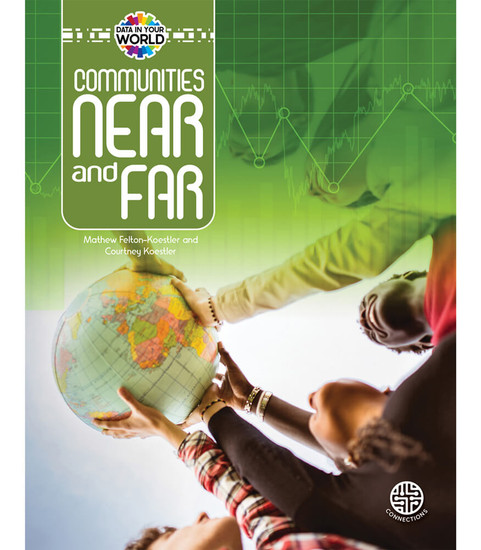Communities Near and Far gives young readers a basic look into data collection and how it affects different communities, both at home and around the world. This children's book includes text-based questions to develop reading skills and an extension activity that can be done at home or in the classroom. Each kid's book in the Data In Your World series focuses on a particular topic, giving readers an introduction to data and how it is relevant to their lives in school and around their community. Also included are an index, glossary, before- and after-reading questions, and an extension activity. Rourke proudly publishes respectful and relevant non-fiction and fiction titles that represent our diverse readers, and are designed to support reading on a level that has no limits!
"With the idea the "Data can help us understand the world, our country, and our local communities" in mind, these books explain how data may be organized into graphs, charts, and maps, and then used for analysis. Examples, such as a bar graph of U.S. race/ethnicity, are shown; then captions explain how to interpret the data. The usefulness of maps that reflect the connection between geography and data is also pointed out. Intentional misuse of data and how it can be misunderstood due to misreading or unclear labels is discussed, as well as how data can be used to predict future trends. Name changes for race and ethnicity over time are also mentioned. Each book begins with "Before" and "During" reading suggestions, and back matter features reflection questions and a suggested extension activity. VERDICT A helpful purchase for classes working on data interpretation."
School Library Journal, November 2022
"This careful breakdown of the variety of factors that can contribute to our understanding of what community means is refreshing and much-needed. It begins with prereading activities to build on prior knowledge and introduce vocabulary terms. Suggestions for during-reading and postreading extension activities add to the pedagogic scope. The concept of a community is addressed broadly, starting with what a global community means, through infographics and data charts that break down technical information into accessible chunks. Subsequent sections address racial diversity and ways to think about the various demographic terms that define us, narrowing the focus of community at the national, state, and neighborhood levels. Important topics such as red-lining, housing segregation, and unfair mortgage practices are also included. An attractive layout, colorful pictures, and a conversational narrative tone make for an appealing middle-level classroom addition."
Booklist, April 2022









